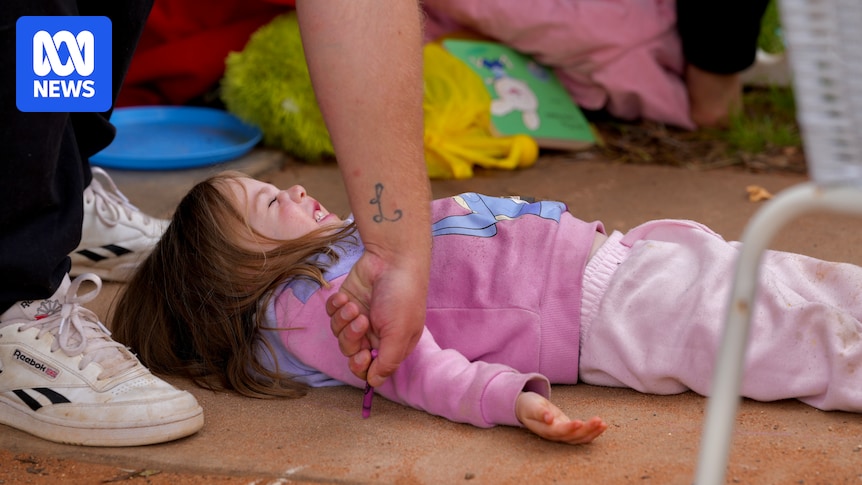
The New South Wales (NSW) government is under fire following accusations of a cover-up involving a critical report on lead dust contamination that has been “poisoning” children. The report, commissioned by the NSW Environment Protection Authority (EPA), was withheld for nearly four years, raising concerns about transparency and public health.
The controversy erupted after Mudgee resident Jayne Bentivoglio received a tip-off in 2023 regarding the approval of the Bowdens silver mine near her farm, which would also produce lead and zinc. This led her to discover a report on lead contamination in Broken Hill, which had been quietly published after years of delay.
Unveiling the Report
The report, titled “Environmental Lead Risks at Broken Hill, New South Wales, Australia: Sources, Exposures and Forward Solutions,” was prepared by Mark Taylor, a professor of environmental science and human health at Macquarie University. Submitted to the EPA in December 2019, it was only released in October 2023.
The report identified current and legacy mines, as well as Broken Hill’s central ore body, the Line of Lode, as primary sources of lead contamination. It highlighted the high levels of lead found in children’s blood and recommended measures to set trigger levels for lead in dust emissions.
“It’s often been touted by mining companies that the lead is naturally occurring,” Taylor explained. “Of course, the lead is naturally occurring because there’s an ore body that we mine, but the distribution and dispersal around a mining town is not naturally occurring.”
Health Implications for Children
Children in Broken Hill are particularly vulnerable to lead exposure. Taylor emphasized the risk from dust ingestion, which occurs when dust becomes airborne and lands on children’s hands, leading to ingestion through hand-to-mouth behavior.
In response, Broken Hill Mines, which acquired one of the city’s mining operations in October 2024, stated that the report’s findings were based on a period under different ownership. The company emphasized its commitment to operating responsibly and reducing lead exposure risks.
However, the NSW government’s efforts to monitor and reduce blood lead levels in children have been ongoing since the 1990s, with millions of dollars invested. Lavinia Henderson from Maari Ma Aboriginal Health Corporation highlighted the severe health impacts of high blood lead levels, including cognitive issues and impaired learning.
Family Struggles and Community Concerns
Ethan Pearce, a resident living near the Line of Lode, shared his family’s experience with elevated blood lead levels. His children, Nova and Atlas, have undergone testing as part of a screening program. Remediation efforts at their home included replacing lead-contaminated topsoil.
“Living in Broken Hill, we’re always prone to having high lead levels purely because of the mines,” Pearce said. “The only way you could really remediate it is constant replacement of soil, constant checking of any dust particles in your house.”
Allegations of a Cover-Up
Documents obtained by Bentivoglio through Freedom of Information requests revealed internal EPA emails discussing the decision to delay the report’s publication. The EPA cited factors such as the winding up of the BHELP Steering Committee and the COVID-19 pandemic as reasons for the delay.
“The length of time between receipt of the report and publication may cause people to think that the EPA was attempting to hide something,” a governmental briefing note stated. “This is not the case.”
Despite these claims, the delay in publishing the report has raised questions about the influence of mining companies and the potential impact on public health. EPA CEO Tony Chappel, who assumed his role in 2022, expressed disappointment over the delay and reaffirmed the agency’s commitment to transparency.
Looking Ahead: Implications for Mudgee
Concerns have also emerged regarding the potential impact of the Bowdens silver mine near Mudgee. An internal EPA email expressed fears of a repeat of the Broken Hill situation, emphasizing the need for proactive measures to prevent similar health risks.
Bentivoglio remains skeptical of assurances that the Bowdens project will not affect public health, drawing parallels to the situation in Broken Hill. However, Taylor and Bowdens Silver argue that the two sites are not comparable due to differences in scale, proximity to residents, and regulatory measures.
As the debate continues, the NSW government faces mounting pressure to address the health risks associated with lead contamination and ensure the safety of communities near mining operations. The outcome of this controversy could have significant implications for public health policy and regulatory practices in the state.







